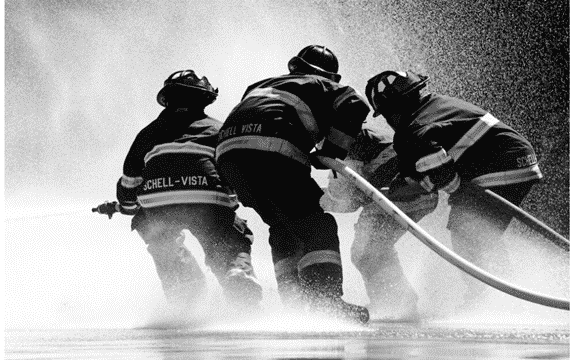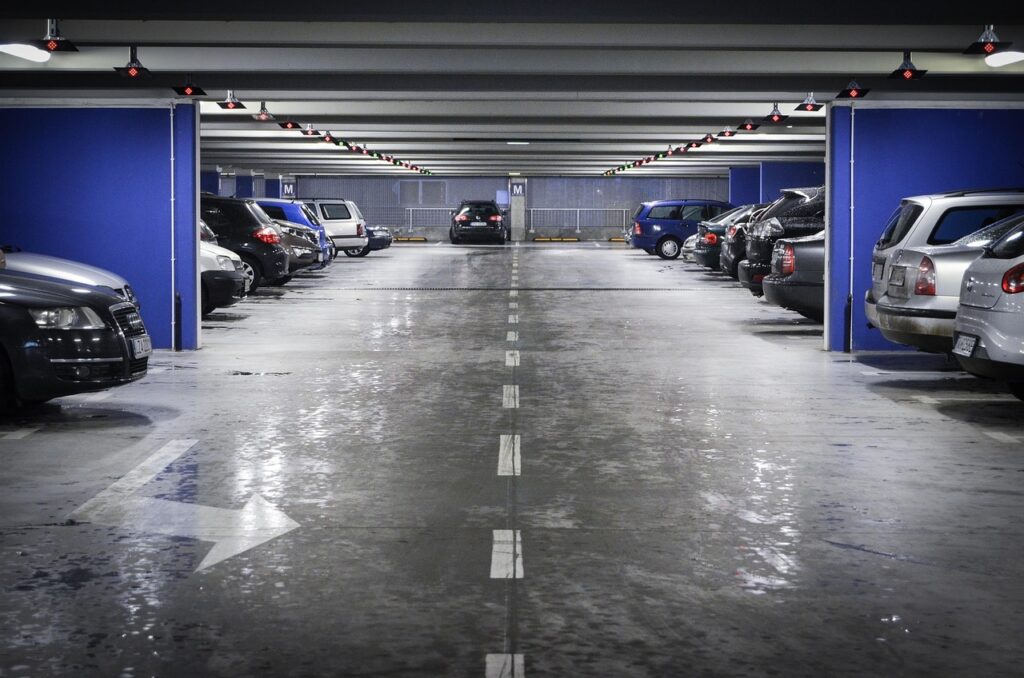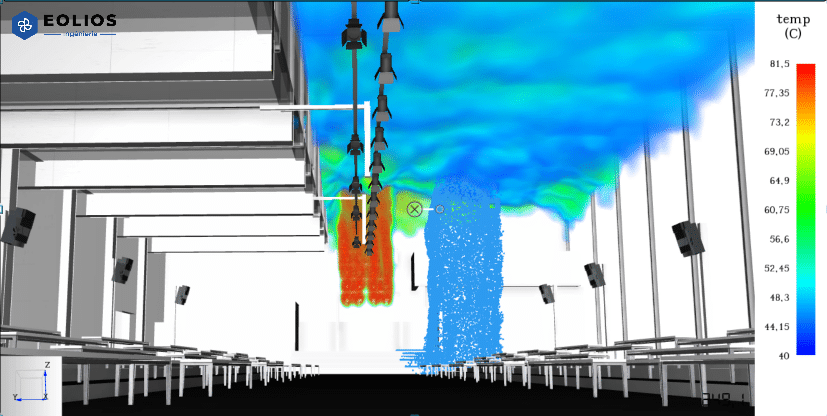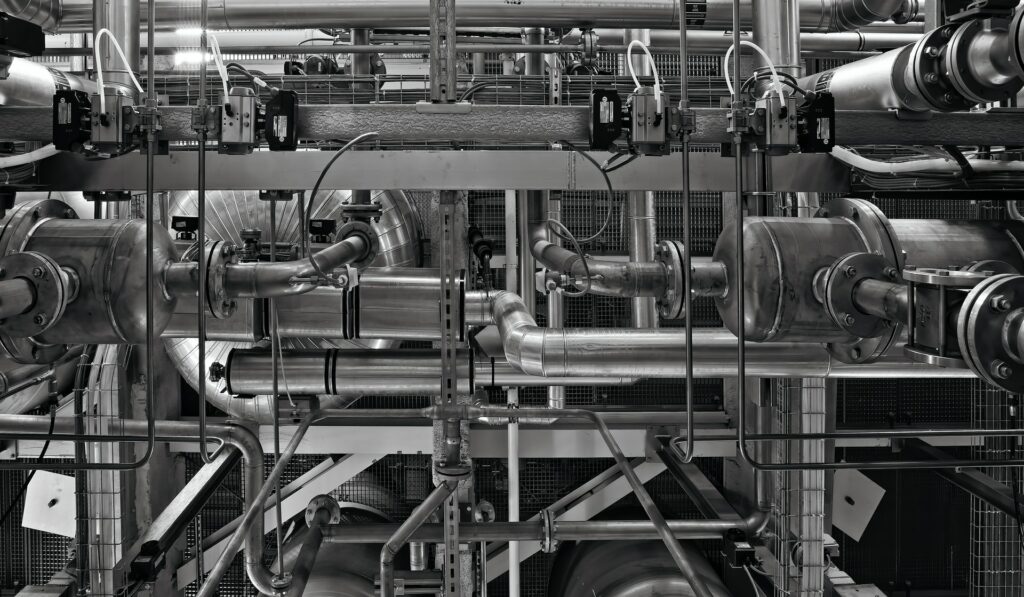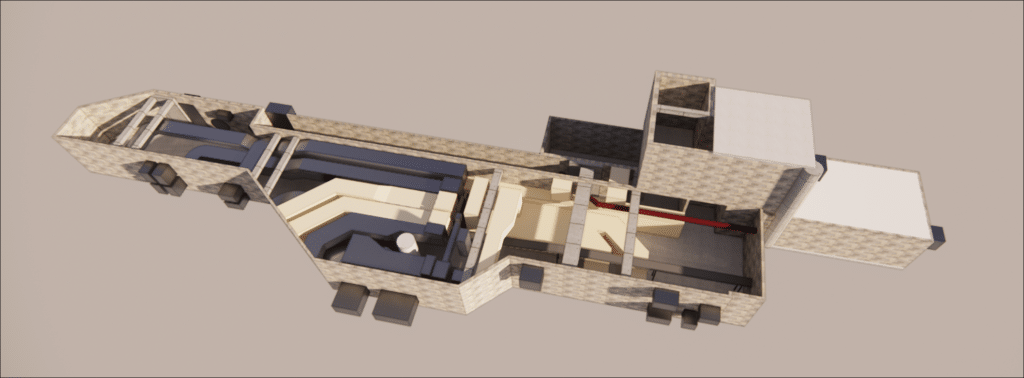Accueil » Industrial Process » Study of network load losses » Losses – CNIT
Losses – CNIT
Reduced pressure drop in the air distribution plenum to ensure efficient smoke extraction at CNIT
The aim of this assignment was to assess the pressure drops in the air diffusion plenum located under the CNIT building in Paris, in order to guarantee its proper operation in the event of smoke extraction requirements. 3D modeling of the plenum was carried out to assess pressures and problem areas.
Reduced pressure drop in the air distribution plenum to ensure efficient smoke extraction at CNIT
Year
2024
Customer
Unibai Rodamco
Location
France
Typology
Smoke control
Continue navigation :
Our other projects :
Latest news :
Technical file :
Our expertise:
Reduced pressure drop in the air distribution plenum to ensure efficient smoke extraction at CNIT
Assessing the suitability of the ventilation system to support production expansion at the Aluminium Dunkerque plant
The aim of this assignment was to assess the pressure distribution within the air diffusion plenum located under the CNIT building in Paris, to ensure that pressure drops do not exceed system limits, and thus guarantee its proper operation in the event of smoke extraction requirements. This assessment is carried out in a context where the plenum is congested, with a large number of ducts reducing the airflow cross-section.
Once pressure losses have been assessed in a standard scenario, the aim is to propose optimizations to reduce pressure losses caused by ducts.
Presentation of the 3D study model of the CNIT hopper
In this project, it is crucial to use CFD simulations to validate the pressure drop induced by the location of the ducts, and possibly to consider the installation of baffles.
The challenge is to find solutions that minimize pressure losses and optimize the operation of the air distribution system to ensure maximum efficiency and safety when smoke extraction is required.
Simulation on existing configuration
3D plenum modeling
As part of this study, the overall volumetry of the plenum was accurately modeled, taking into account the layout of all the networks to get as close as possible to actual operating conditions. Based on on-site surveys carried out during an audit, all openings, beams, ducts, masonry and other plenum geometries were accurately modeled.
The masonry at the plenum inlet was also taken into account, enabling us to accurately assess the impact of these elements on the fresh air intake. As a result, all the main aeraulic masks were remodeled and integrated into the studies.
In order to assess the maximum pressure drop within the plenum and check the system sizing, it is necessary to use the worst-case scenario. To do this, it’s essential to consider the case where the maximum amount of air is drawn in from the plenum.
By taking this extreme scenario into account, we can ensure that our facilities are adequately sized to cope with the most demanding conditions.
Determining problem zones with CFD
Computational Fluid Dynamics (CFD) covers all the numerical methods used to study fluid flow in a given environment. These flows are governed by partial differential equations that cannot be solved analytically. These equations can be solved numerically using the finite element method, which provides an approximate solution to a physical problem.
When applied to buildings, a CFD study can provide the designer with valuable information on likely air velocities, pressures and temperatures in and around building spaces.
Pressure loss study [Echelle masquée]
A CFD study is therefore carried out on the proposed plenum model, which faithfully reproduces reality, and thus makes it possible to determine the areas with high pressure drops under current conditions that need to be modified in order to achieve the pressure drop targets necessary for the smoke extraction system to function properly.
Suggested improvements to reduce pressure losses
Proposed solutions and rearrangements
Numerous technical solutions have been proposed to improve airflow in the plenum and optimize smoke evacuation, such as modifying the location of ducts, rearranging problematic masonry, optimizing the aerodynamics of the volumes present, or installing hoods to better guide the airflow towards the outlet.
Evaluating the effectiveness of the new configuration
The various optimizations carried out have considerably reduced the pressure drop compared with the basic design. The last scenario studied, which incorporates all possible improvements based on project constraints, presents a load loss halved compared with the current situation.
What’s more, in the worst case, the plenum end pressure is on the order of the target set for the general case, which was far from being the case in the initial configuration.
Pressure loss study initial state [Echelle masquée]
Study of pressure losses after optimization [Echelle masquée]
Fire safety: Analysis of smoke extraction systems in buildings
The aim of the studies carried out was to verify the design of the systems in response to a smoke extraction scenario. This means that emphasis has been placed on assessing the performance of installations in conditions where rapid smoke and heat evacuation is required in the event of fire. This ensures that systems meet fire safety regulatory requirements and can protect building occupants in the event of an emergency.
> Read more :
Continue on this topic
Video summary of the study
Summary of the study
The mission consisted in assessing the head losses in the air diffusion plenum located under the CNIT in Paris, in order to guarantee its proper operation in the event of a smoke extraction requirement. The plenum is cluttered with a large number of ducts, reducing the airflow cross-section. Numerical fluid mechanics (CFD) simulations are carried out to assess head losses and propose optimizations to reduce them. Precise 3D modeling of the plenum is carried out, along with CFD studies to determine areas of high pressure drop.
Various technical solutions are proposed, such as repositioning ducts and installing hoods to improve air circulation. The optimizations made have considerably reduced pressure losses compared with the initial design. The aim of the studies is to check that the installations meet fire safety requirements for rapid evacuation of smoke and heat in the event of a fire.


